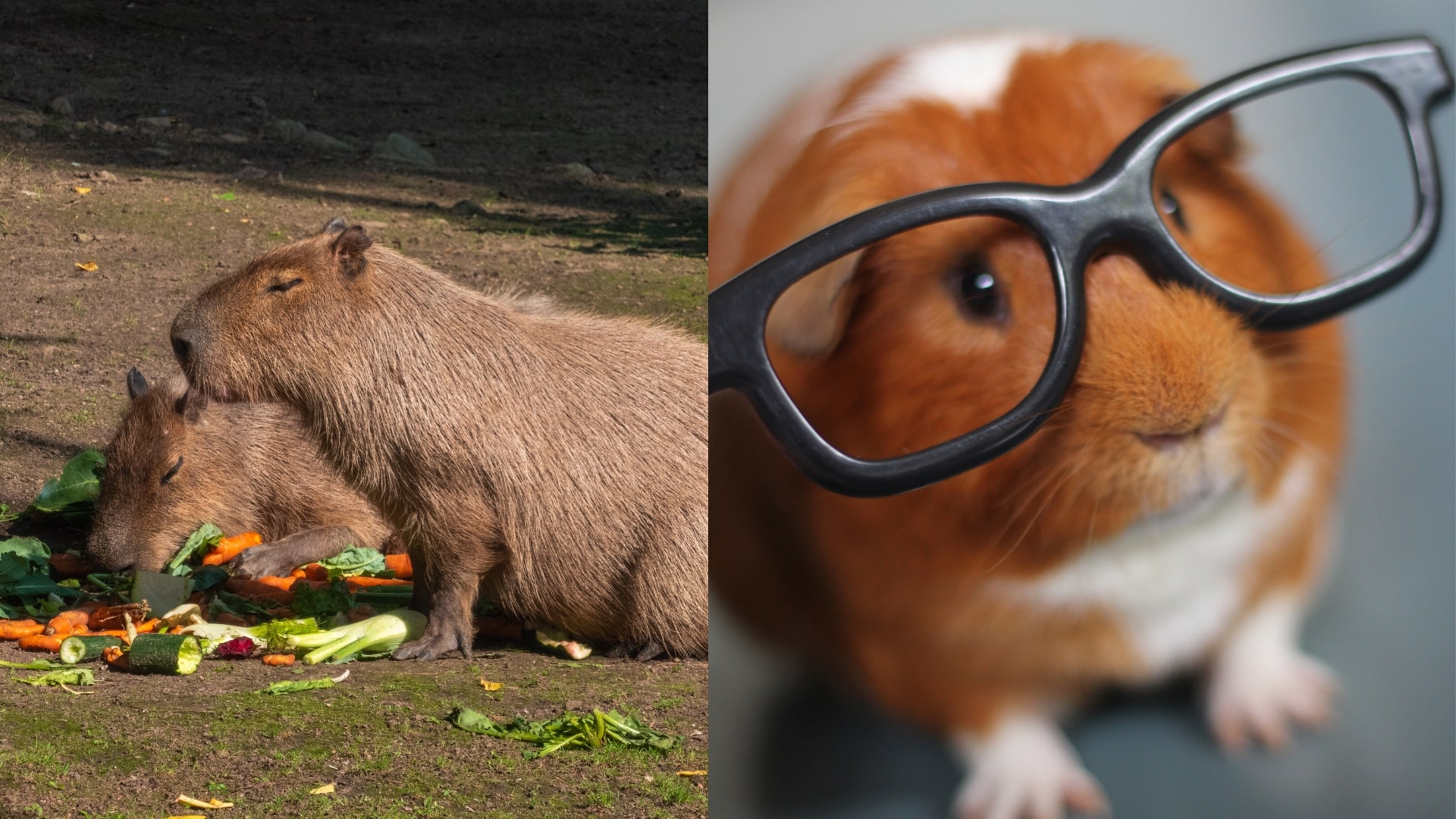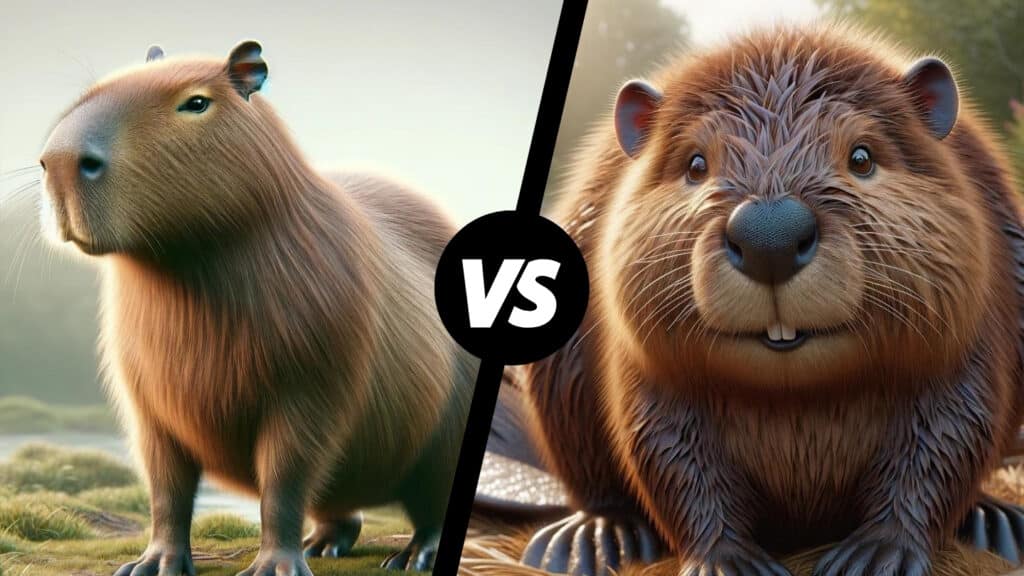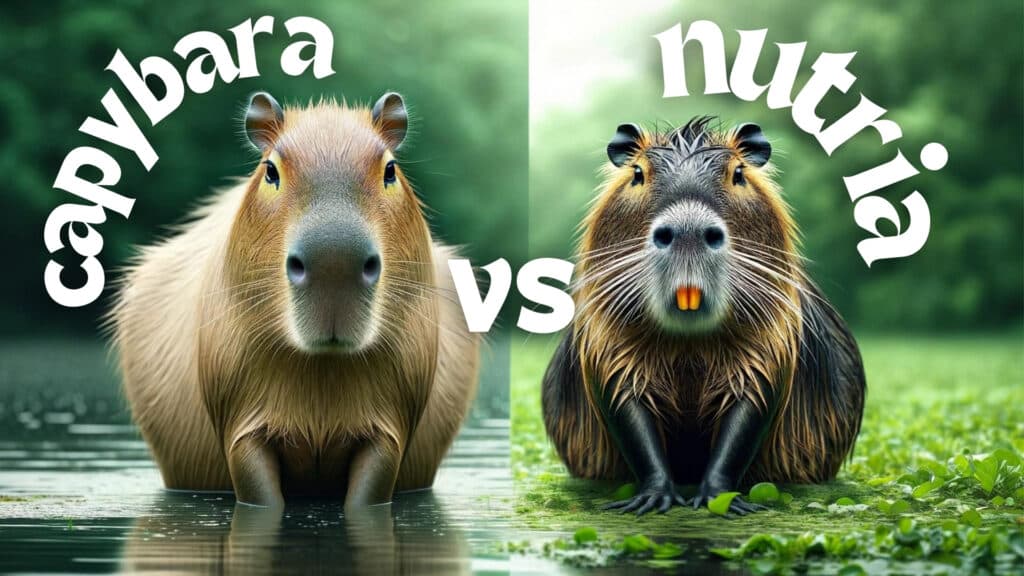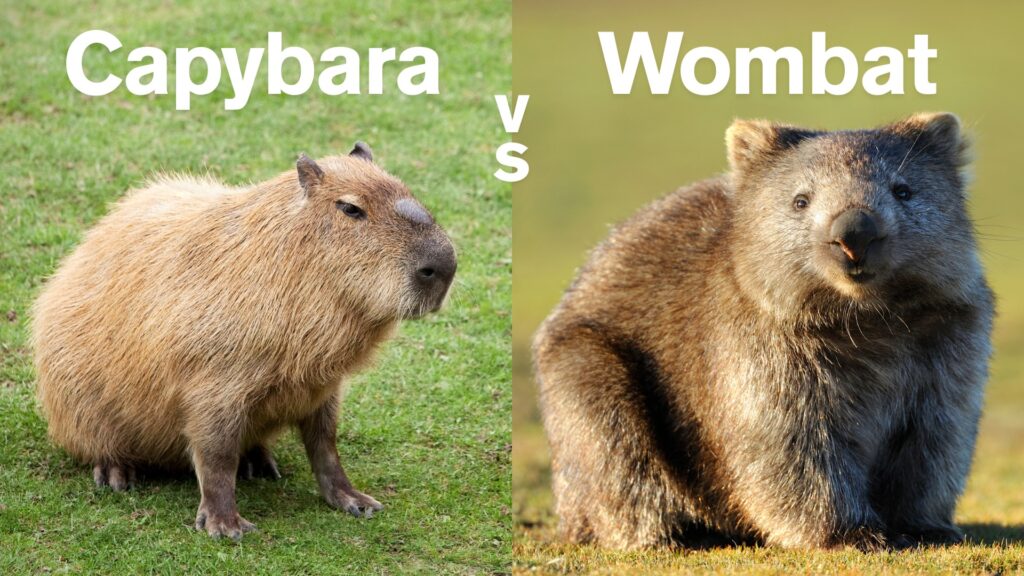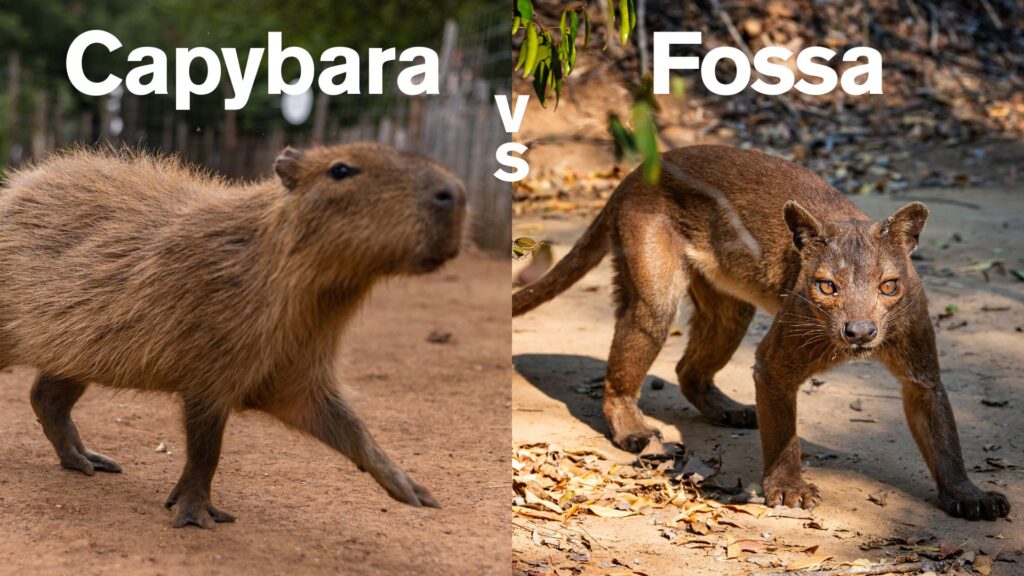Capybaras are the world’s largest rodents, known for their love of water and social nature, while guinea pigs are much smaller, land-loving animals that thrive in pairs or small groups. Though they share a common ancestry, their differences in size, habitat, and behavior are striking.
Main Key Differences
Let’s break down the most important distinctions:
- Size: Capybaras win by a landslide they’re the world’s largest rodents!
- Social Structure: Capybaras live in large, complex groups, while guinea pigs prefer smaller, more intimate groups.
- Swimming Ability: Capybaras are natural swimmers with webbed feet, whereas guinea pigs stick to dry land.
- Behavior: Capybaras are incredibly calm and laid-back, while guinea pigs are more alert and skittish.
- Habitat: Capybaras thrive in semi-aquatic environments, while guinea pigs are strictly land-dwellers.
Comparative Table
| Characteristic | Capybara | Guinea Pig |
|---|---|---|
| Kingdom | Animalia | Animalia |
| Class | Mammalia | Mammalia |
| Order | Rodentia | Rodentia |
| Phylum | Chordata | Chordata |
| Grooming | Social grooming in groups | Self-grooming, some social |
| Genus | Hydrochoerus | Cavia |
| Species | H. hydrochaeris | C. porcellus |
| Family | Caviidae | Caviidae |
| Life Expectancy | 8-10 years | 4-8 years |
| Hunting Ability | None, herbivores | None, herbivores |
| Loneliness | Prefer company, very social | Can be kept in pairs/groups |
| Space | Requires large outdoor space | Smaller indoor space suffices |
| Affection | Very affectionate | Affectionate with familiar humans |
| Protection | Relies on group and water | Hides or freezes when threatened |
| Energy | Generally relaxed | Active, especially at night |
| Weight | 35-66 kg (77-146 lbs.) | 700-1,200 g (24-42 oz) |
| Height/Size | 50-64 cm (20-25 in) tall | 20-25 cm (8-10 in) long |
| Physical Characteristics | Large, barrel-shaped, webbed feet | Small, rounded, short legs |
Behavior
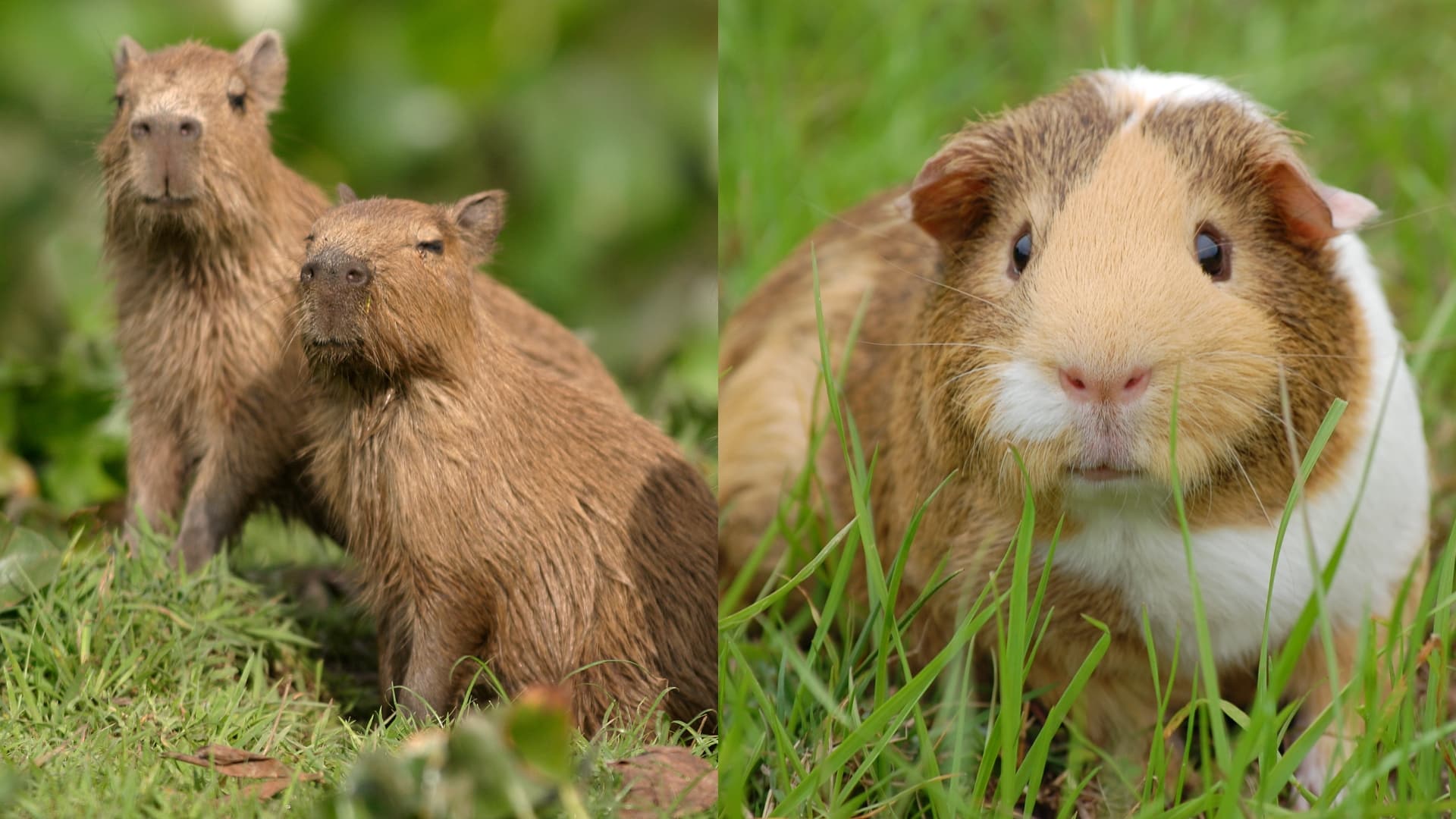
Capybara: Capybaras are social animals that thrive in large groups. They’re typically found in the wild in groups of 10-20, sometimes even larger. They communicate with a variety of sounds like barks, whistles, and purrs. Being semi-aquatic, they spend a lot of their time near water and are excellent swimmers. Their behavior is often relaxed and laid-back, reflecting their calm and peaceful nature.
Guinea Pig: Guinea pigs are also social creatures but are usually kept in pairs or small groups in captivity. They communicate using high-pitched squeaks, purrs, and rumbling noises. Unlike capybaras, guinea pigs don’t need water bodies, and their behavior is generally more alert and skittish. They enjoy burrowing and hiding in small spaces, a trait that reflects their instinct to avoid predators.
Apart from guinea pigs, capybaras are often compared to larger species like marmots, highlighting how size and habitat influence their way of life.
Personality
Capybara: Capybaras are often described as gentle giants. They are incredibly docile and have a calm demeanor, making them friendly towards humans and other animals. This easy-going nature is why they’re sometimes called “nature’s therapy animals.” Capybaras are known for their tolerance and patience, often allowing birds to perch on them or other animals to cuddle up next to them.
Guinea Pig: Guinea pigs are curious and playful, though they can be more timid than capybaras. They bond closely with their human caretakers and can be very affectionate once they trust you. Each guinea pig has its own distinct personality, ranging from shy and reserved to bold and adventurous. They may take some time to warm up to new environments, but once they do, they’re quite interactive.
Find out how capybaras are compared with beavers.
Intelligence

Capybara: Capybaras are highly intelligent animals. They can be trained to respond to commands, and they learn routines quickly. Their intelligence is often compared to that of dogs, and they display problem-solving abilities in the wild, such as figuring out the best routes to food sources or how to navigate obstacles in water.
Guinea Pig: Guinea pigs are intelligent in their own right. They can learn simple tricks, recognize their owners, and even respond to their names. While not as trainable as capybaras, guinea pigs exhibit a strong sense of awareness and can memorize paths and routines. Their intelligence is often showcased in their social interactions and communication.
While both species are herbivores, things shift dramatically when capybaras are placed against natural predators like the fossa in this unique comparison.
Swimming Power
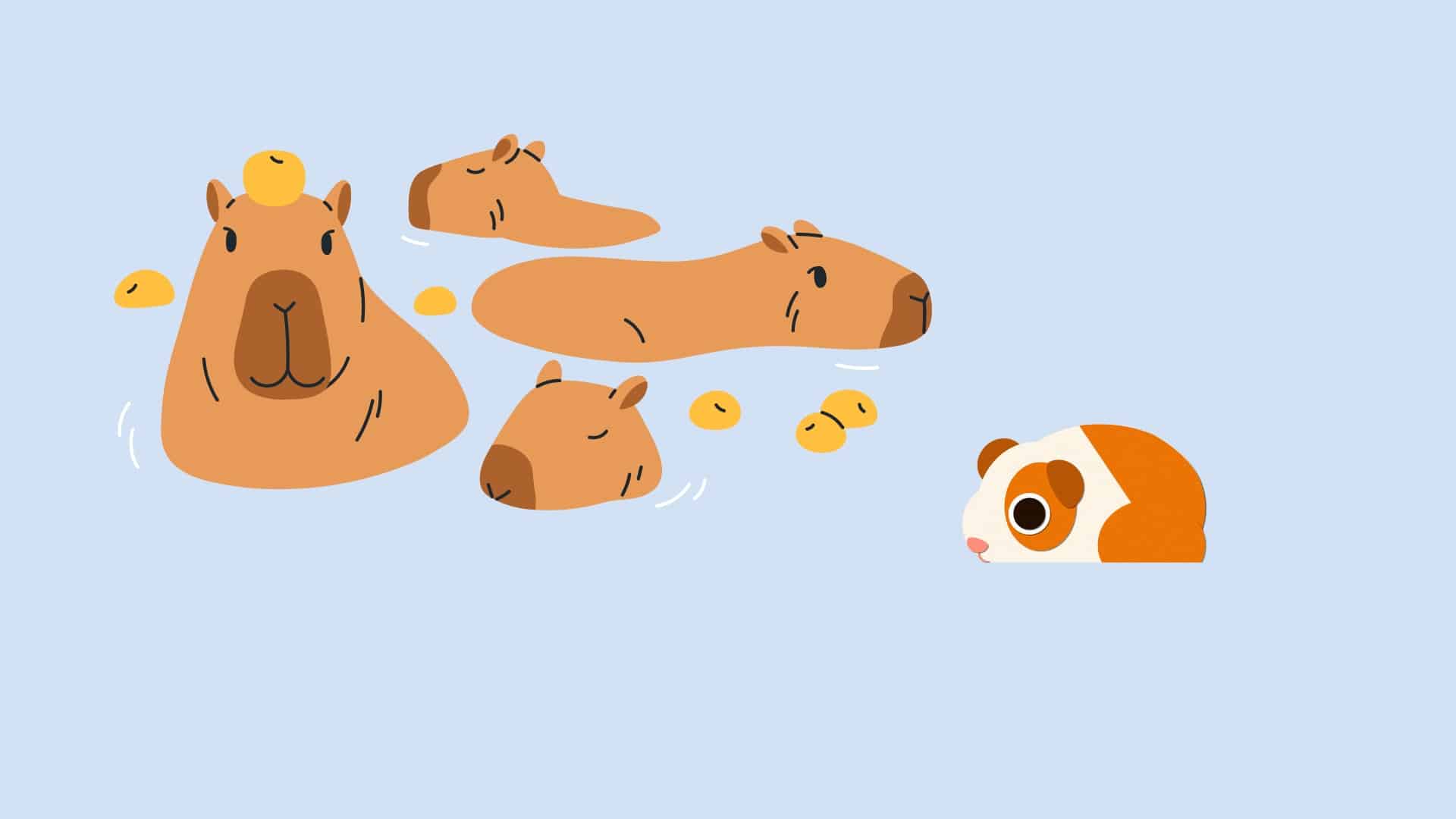
Capybara: Capybaras are natural swimmers. Their webbed feet make them excellent in the water, allowing them to swim efficiently and even sleep while floating. They use water as an escape route from predators and can stay submerged for several minutes. Swimming is not just a survival skill for capybaras; it’s a part of their daily routine.
Guinea Pig: Guinea pigs, on the other hand, are not built for swimming. While they can paddle for a short time if placed in water, it’s not a natural activity for them, and they can become stressed. Unlike capybaras, guinea pigs prefer to stay on dry land and explore their surroundings from the safety of solid ground.
Beyond their rodent cousins, capybaras have also been compared to unexpected animals like pelicans, offering a very different kind of contrast.
Running Speed
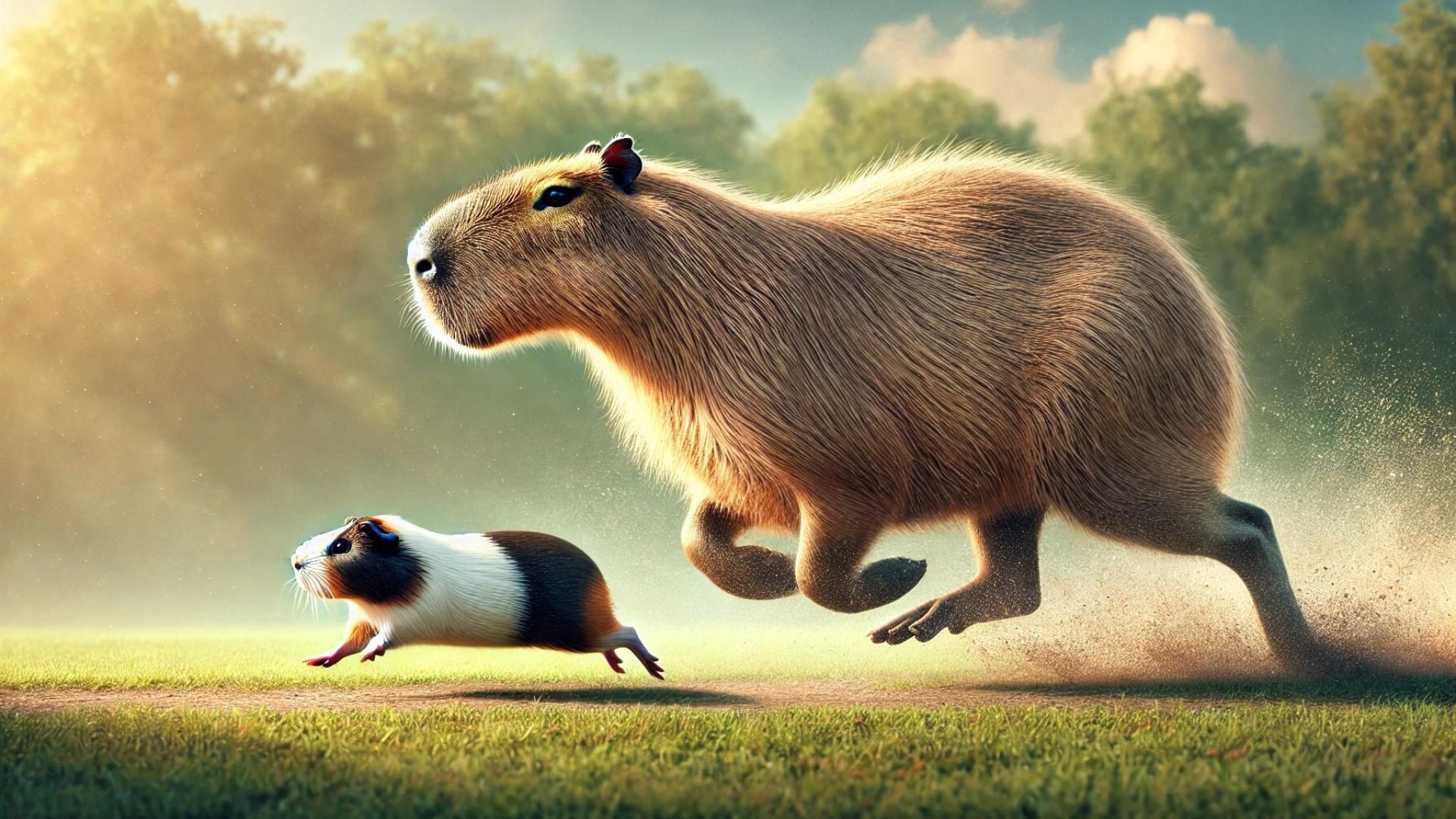
Capybara: Despite their large size, capybaras can run surprisingly fast when they need to. They can reach speeds of up to 35 km/h (22 mph) to evade predators. Their speed, combined with their agility in water, makes them difficult prey.
Guinea Pig: Guinea pigs are also quick on their feet, but their top speed is around 8 km/h (5 mph). They use their speed to dart into hiding places when they sense danger. Their small size and agility allow them to navigate tight spaces, which serves as their primary defense mechanism.
Body Language
Capybara: Capybaras use body language to communicate with each other and with other animals. A relaxed capybara might lie down on its side or stretch out. If they feel threatened, they’ll stand alert and may even vocalize to warn others in the group. Their body language is generally calm and reflects their peaceful nature.
Guinea Pig: Guinea pigs are more expressive with their body language. They might popcorn (a joyful jump) when they’re happy, or freeze in place when they’re scared. They also use body language to assert dominance or show submission within their social groups. Understanding a guinea pig’s body language is key to knowing how they’re feeling.
While we’ve explored how capybaras compare to their smaller rodent cousin the guinea pig in terms of size and habitat preferences, the differences become even more pronounced when comparing capybaras to marsupials like wombats.
Conclusion
In the captivating world of rodents, capybaras and guinea pigs stand out as fascinating yet distinct creatures. Capybaras, with their impressive size and love for water, embody tranquility and social harmony, thriving in large groups by rivers and lakes.
In contrast, guinea pigs, though smaller and more land-oriented, charm with their lively personalities and strong bonds with their human caretakers. These differences in size, habitat, behavior, and social structures highlight the unique adaptations of each species.
Whether drawn to the capybara’s serene nature or the guinea pig’s playful energy, both animals offer a glimpse into the diverse wonders of the animal kingdom.
